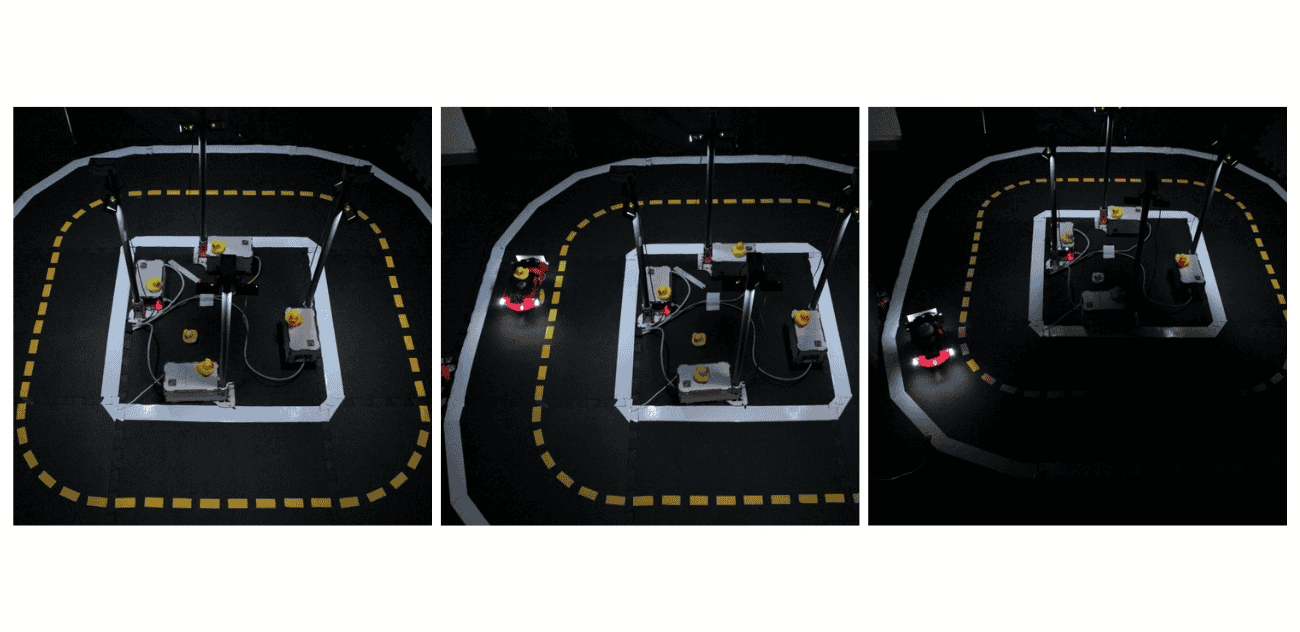Smart Lighting: Realistic Day and Night in Duckietown
Project Resources
- Objective: City Realism: Characterising Night and Day Autonomous Driving Performance in the Duckietown Autolab
- Approach: Developing an automated street "smart" lighting system and control models, including a PI controller.
- Authors: David Müller
Project Highlights
Here is the output of the authors’ work on smart lighting autonomous driving.
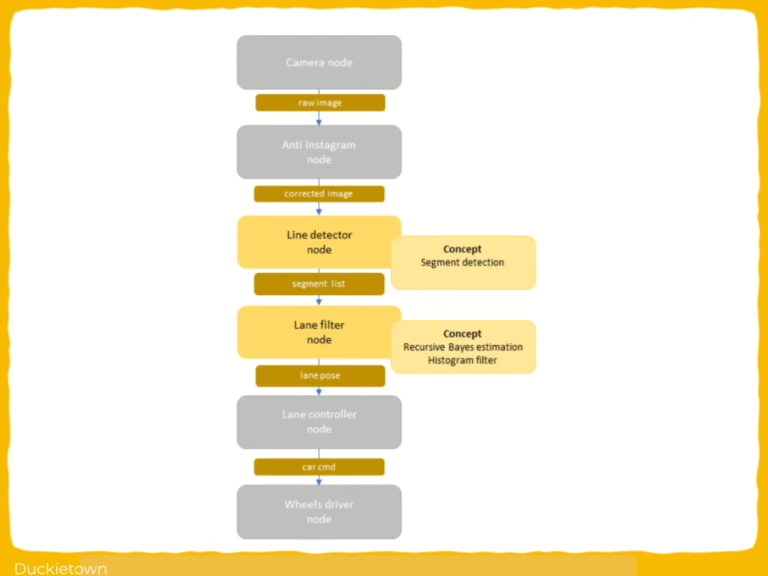
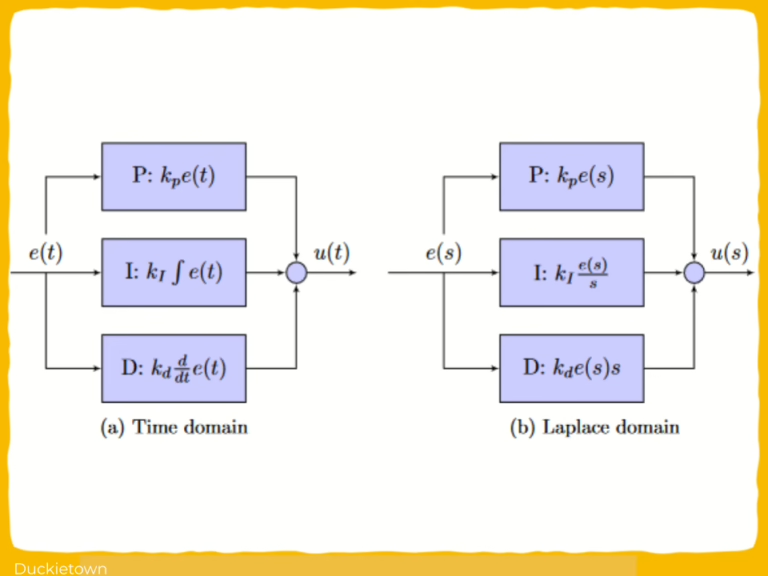
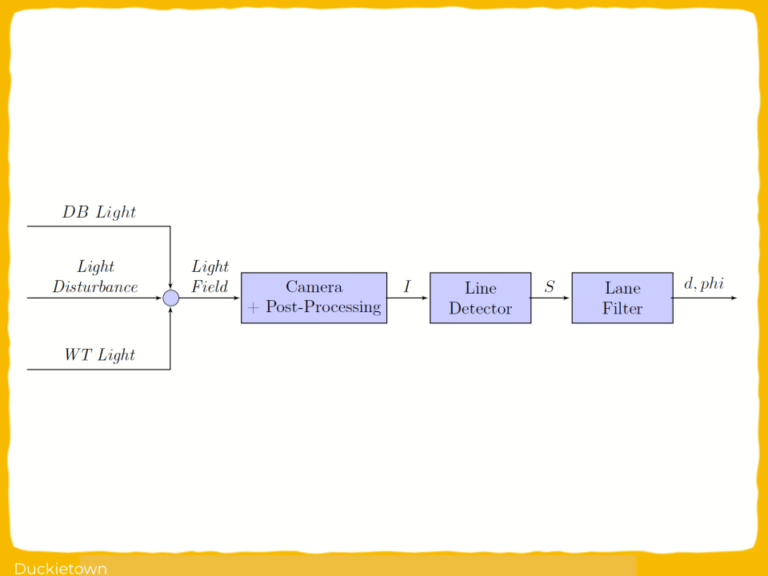
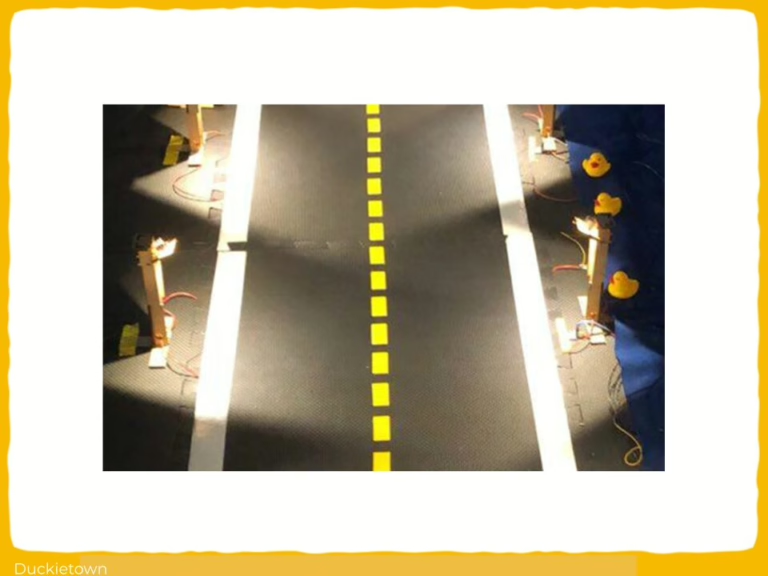
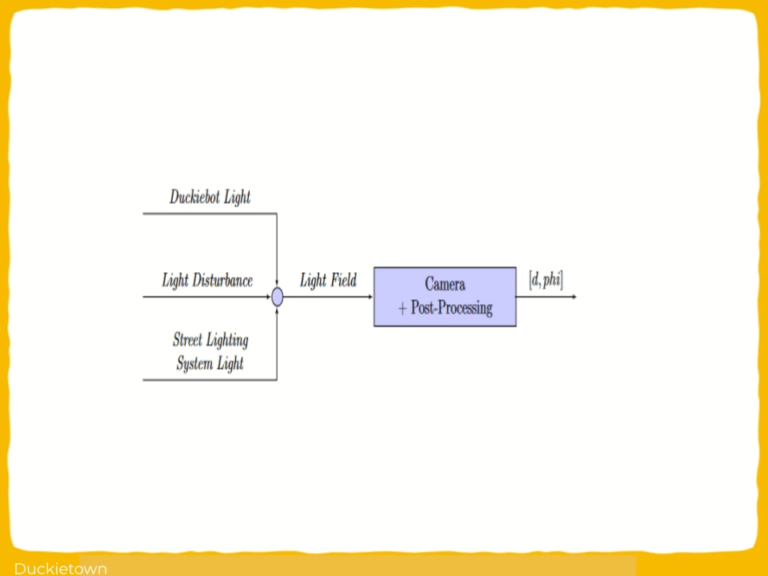
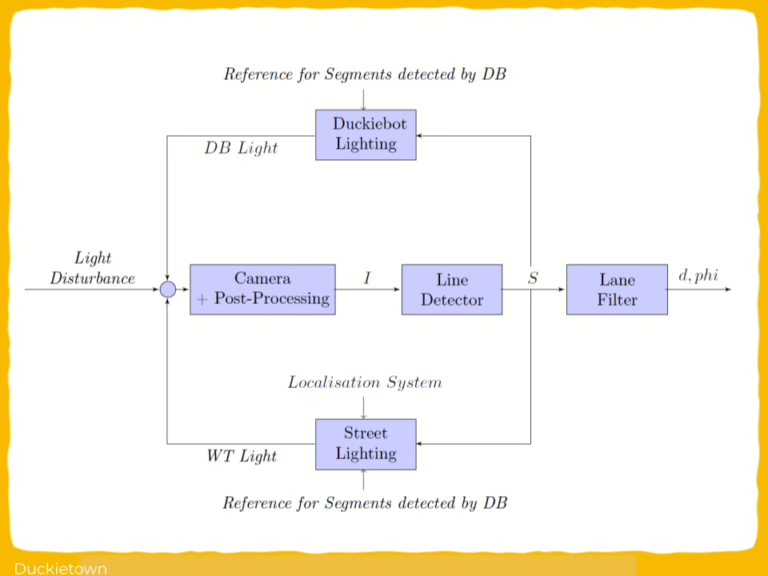

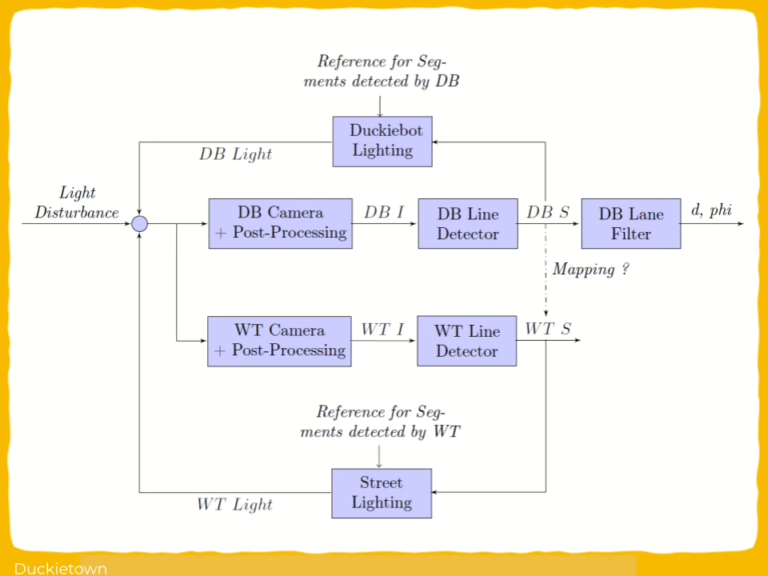
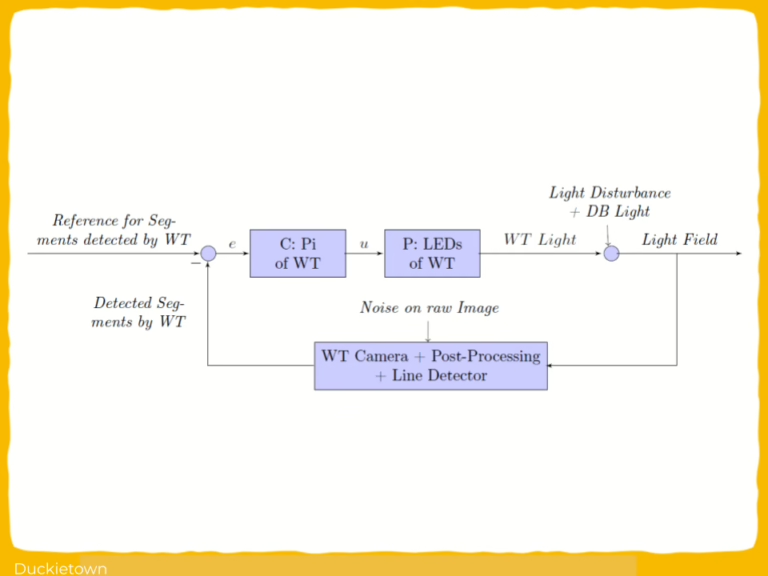
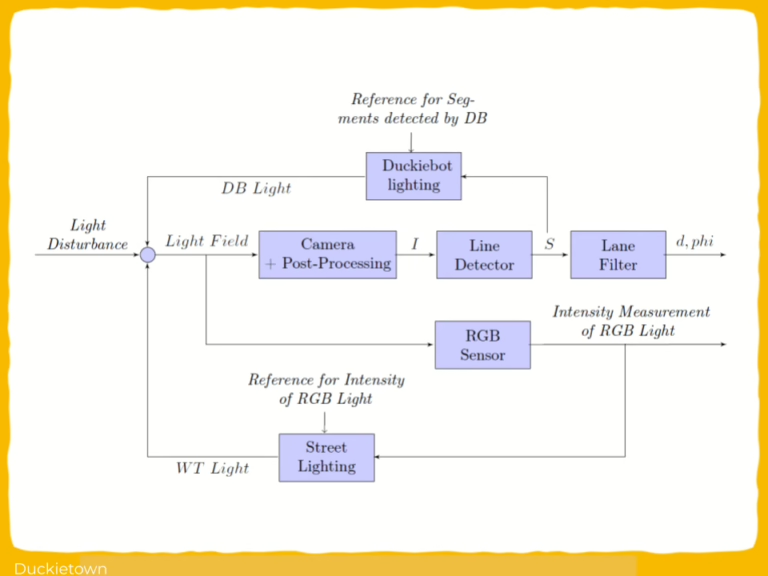
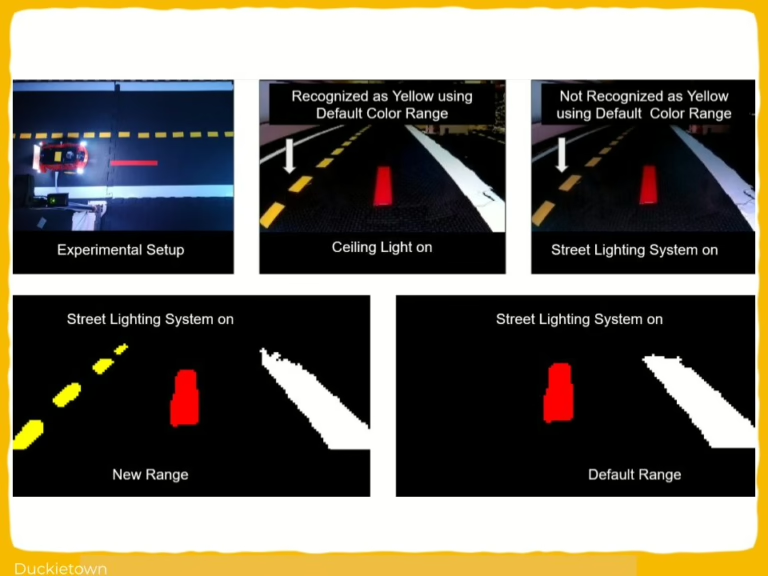
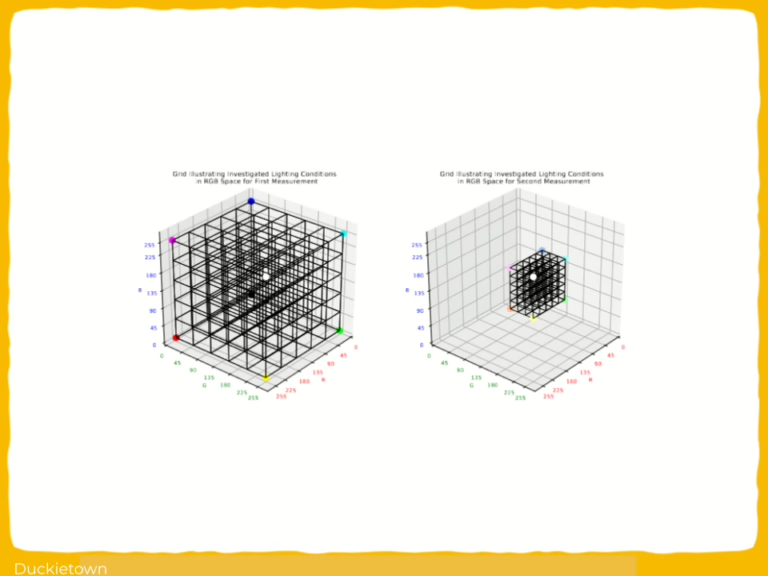
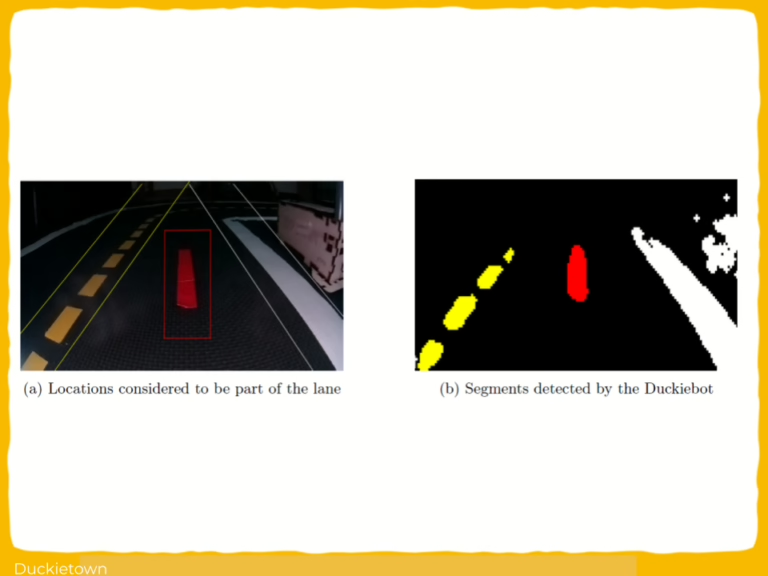
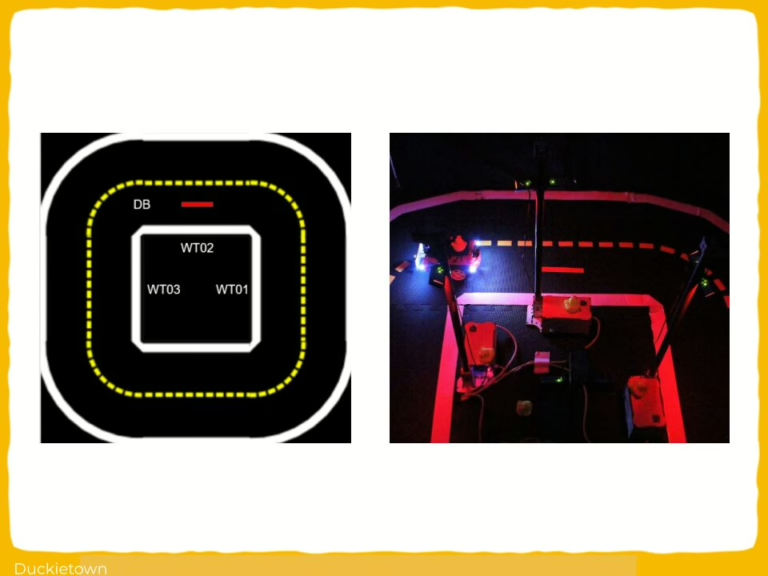
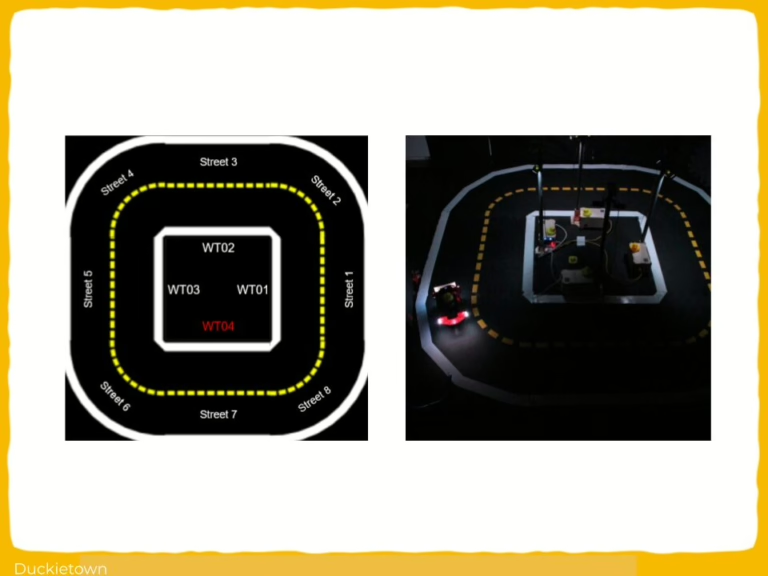
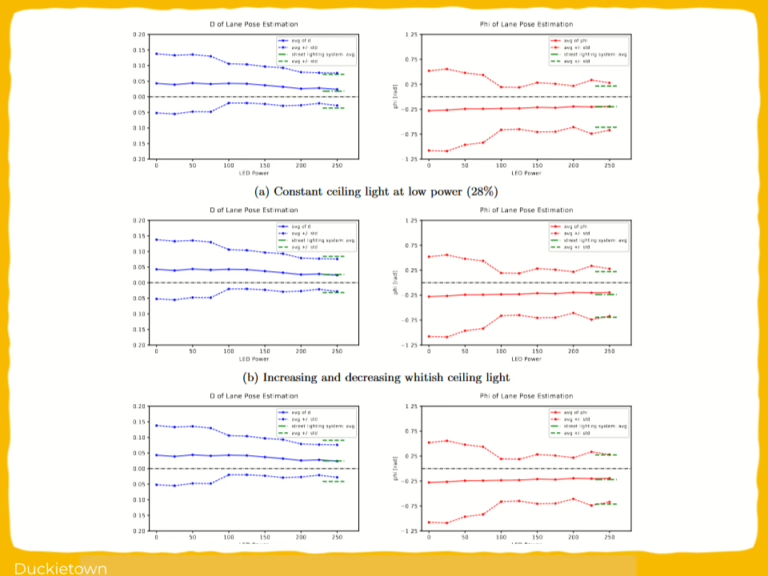
Why day and night autonomous driving in Duckietown?
Autonomous driving is already inherently hard. Driving at night makes it even more challenging! This is why smart lighting is an interesting application that intersects with autonomous driving: having city infrastructure, such as traffic lights and watchtowers, generate dynamically varying light – only where and when they’re needed – to make driving at night not only possible but safe. Here are some reasons for which this project is interesting:
Realistic driving scenarios: autonomous driving systems must handle varying lighting conditions. Day and night cycles are just the beginning: transitions like sunrise or sunset make the spectrum of experimental corner cases more complex, hence Duckietown a valuable testbed.
Robust lane-following capabilities: developing an adaptive lighting system in which the city infrastructure “collaborates” with Duckiebot to provide optimal driving scenarios reinforces driving performances and general robustness for lane following.
Decentralized control for scalability: a decentralized approach to managing lighting implies that the system can be scalable across Duckietowns of arbitrary dimensions, making it more adaptable and resilient.
Autonomous lighting management: a responsive street lighting system, working in tandem with the Duckiebot’s onboard sensors, improves energy efficiency and ensures safety by adjusting to local lighting needs automatically.
Smart Lighting: Realistic Day and Night in Duckietown - the challenges
Implementing smart lighting in Duckietown to improve autonomous driving during day and night cycles presents several challenges. Here are a few examples:
Hardware modifications: while Duckiebots are equipped with controllable LEDs, city infrastructure does not possess lighting capabilities out of the box. The first step is integrating light sources in the design of Duckietown’s city infrastructure.
Variable lighting conditions: Duckiebots, which in this project rely uniquely on vision in their autonomy pipeline, must adapt to changing lighting conditions such as full darkness, sunrise, sunset, and artificial lighting, which impacts camera vision and lane detection accuracy.
Decentralized control: managing street lighting in a decentralized way across Duckietown ensures that each area adapts to its local lighting needs, compensating for example for the presence of passing Duckiebots with their own lights on. Join control algorithms including both city infrastructure and vehicle lighting intensity add complexity to the system’s design and coordination.
Scalability: the street lighting system must be scalable across the entire city, requiring a design that can be expanded without significant complications.
Safe and reliable operation: the system needs to be safe, adapting to issues such as occasional watchtower lighting source failure, while ensuring consistent lane-following performance.
Smart Lighting: Realistic Day and Night in Duckietown: Results
Smart Lighting: Realistic Day and Night in Duckietown: Authors
David Müller is a former Duckietown student of class Autonomous Mobility on Demand at ETH Zurich, and currently works as a Research Engineer at Disney Research, Switzerland.
Learn more
Duckietown is a modular, customizable and state-of-the-art platform for creating and disseminating robotics and AI learning experiences.
It is designed to teach, learn, and do research: from exploring the fundamentals of computer science and automation to pushing the boundaries of knowledge.

